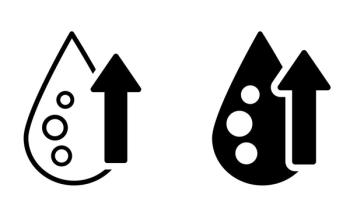
No Plus Seen for Apolipoproteins on Coronary Risk Assessment
FRAMINGHAM, Mass. -- For assessing coronary risk, measuring apolipoprotein levels adds nothing to prognostic information from conventional lipid measurements, found investigators here.
FRAMINGHAM, Mass., Aug. 15 -- For assessing coronary risks, measuring apolipoprotein levels adds nothing to prognostic information derived from conventional lipid measurements, found investigators here.
An elevated apo B:apo A-I ratio was associated with a coronary heart disease hazard ratio of 1.39 per standard deviation in men and 1.40 in women, virtually identical to the risk ratios for total cholesterol:HDL-C and LDL-C:HDL-C, Ramachandran S. Vasan, M.D., of Boston University, and colleagues, reported in the Aug. 15 issue of the Journal of the American Medical Association.
Dr. Vasan and colleagues reported findings from a retrospective analysis of data on 3,322 participants in the fourth examination cycle (1987-1991) of the Framingham offspring cohort. Lipid measurements included total cholesterol, HDL-C, LDL-C, non-HDL-C, apo A-I, apo B, and three ratios: total cholesterol:HDL-C; LDL-C:HDL-C; and apo B:apo A-I.
"In both sexes, models using the apo B:apo A-I ratio demonstrated performance characteristics comparable with but not better than that for other lipid ratios," said Dr. Vasan and colleagues. "The apo B:apo A-I ratio did not predict coronary heart disease risk in a model containing all components of the Framingham risk score including total cholesterol:HDL-C."
The results may help resolve strong disagreement over the relative prognostic value of apo B and apo A-I versus conventional lipid parameters. Inconsistent data had emerged from previous studies, some showing apolipoprotein measurement superior and others the opposite, "fuelling an intense debate," said the authors.
After a median follow-up of 15 years, 291 of the participants had developed coronary disease (198 men, 93 women). In a multivariate model that adjusted for nonlipid coronary disease risk factors, total cholesterol was associated with a coronary disease hazard ratio of 1.39 in men and women. Calculation of the LDL-C:HDL-C ratio led to a hazard ratio of 1.35 in men and 1.36 in women.
Both the total cholesterol:HDL-C ratio and the apo B:apo A-I ratio offered statistically significant improvement in reclassification of coronary disease risk at 10 years. The improvement was similar with the two lipid measurements, although the total cholesterol:HDL-C ratio was numerically superior.
In statistical models that incorporated components of the Framingham risk score, the apo B:apo A-I ratio was not significantly associated with coronary disease. The hazard ratio was 1.23 for men and 1.14 for women. Moreover, including apo B:apo A-I in the models did not significantly improve the prognostic value of the models.
"This observation suggests that apo B:apo A-I ratio does not provide incremental predictive utility over established coronary heart disease risk factors including traditional lipid measures," the authors concluded.
They did note several limitations of the study. "Our sample consists predominantly of middle aged whites of European descent, limiting the generalizability of our findings to other age groups and ethnicities," they wrote. "Specifically, the mean age of our study participants was 51 years, and it is accepted that the incidence of coronary heart disease in women escalates after menopause. Indeed, the overall incidence rate was higher in men than in women. Moreover, total cholesterol and LDL-C did not predict coronary heart disease in sex-specific models, but we observed statistically significant associations in the sex-pooled analyses."
Newsletter
Enhance your clinical practice with the Patient Care newsletter, offering the latest evidence-based guidelines, diagnostic insights, and treatment strategies for primary care physicians.



















































































































































































































































































